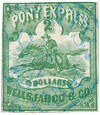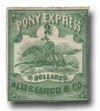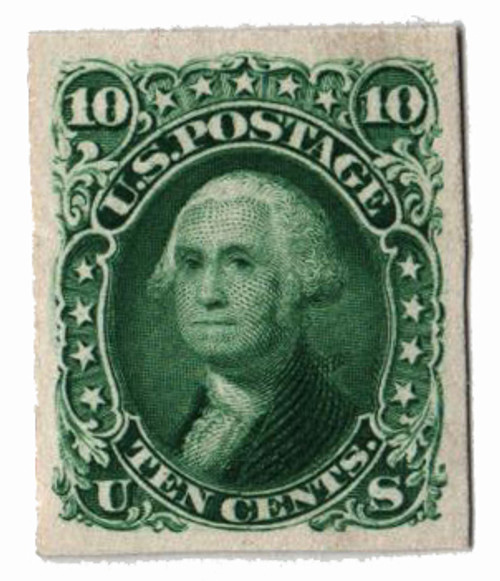
# 143L4 - 1861 $2 Green, Pony Express
Own a Legendary Pony Express Stamp
Now is your chance to own an authentic Pony Express stamp. This stamp is a piece of history and this is your chance to lock it safely away in your collection.
Before 1860, it could take eight weeks for mail to travel across the country – the Pony Express was created to reduce that time. The first trip began in St. Joseph, Missouri, on April 3, 1860, and arrived in California just 10 days later. In 1861, Wells Fargo took over part of the Transcontinental route west of Salt Lake City. To make accounting easier and to advertise their company, they hired Britton and Company to print stamps for the eastbound mail from California.
The Pony Express stamp only covered the part of delivering the letter the Pony Express did. At the end of the run, the letters would be turned over to the Post Office to be delivered by the postal service, so a postage stamp was also required. The green $2 stamp was used to cover the fee for a 1-ounce letter and was used from July 1861 until November 1861.
The intrepid Pony Express ended 18 months after it began, when telegraph lines reached the West Coast. Few stamps can match the Pony Express issues in beauty and history. Quantities are limited and this remarkable opportunity won’t last forever. Order now.
Inaugural Run of the Pony Express
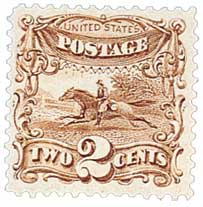
On April 3, 1860, the Pony Express made its first trip from St. Joseph, Missouri, to Sacramento, California. Though short-lived, the Pony Express was a revolution in communication, able to transport important letters across the country more than twice as fast as the existing overland mail system.
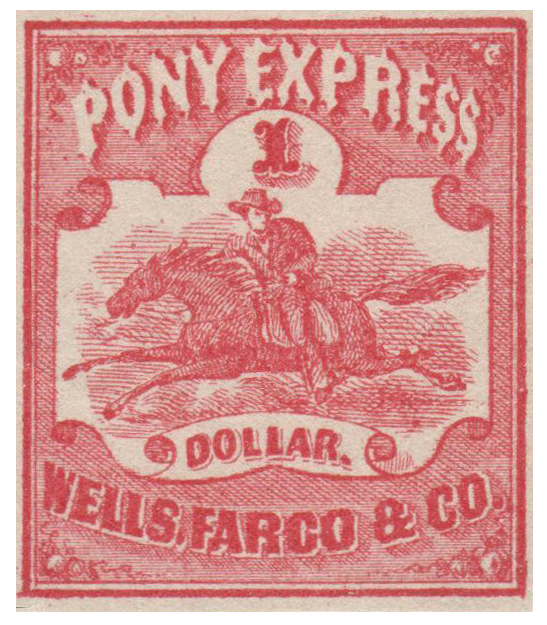
In 1860, William Russell, Alexander Majors, and William B. Waddell sought to create a mail-carrying company that would be faster and more efficient than the stagecoaches of the Butterfield Overland Mail. At that time, it could take months for mail to be delivered to the unsettled West by stagecoach.
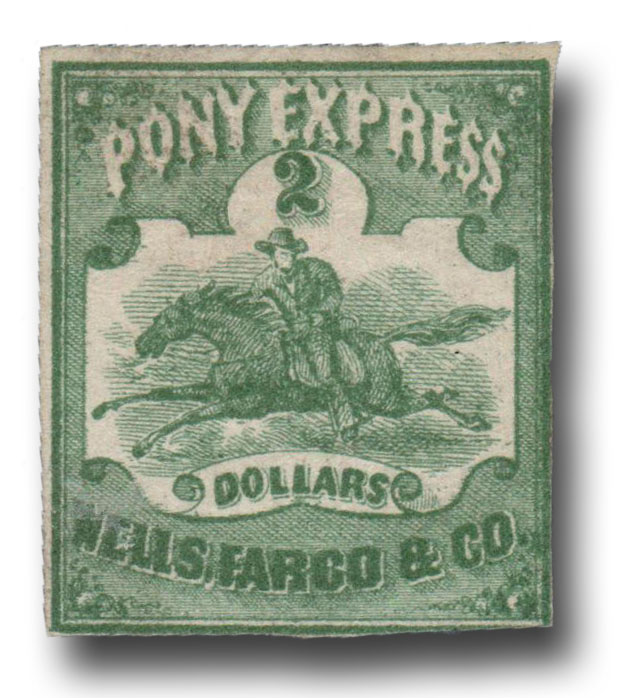
They established 184 stations 10-15 miles apart in just two months. The three founders then put a call out for small, brave young men that could ride a horse well. 400 of the fastest horses they could find were purchased and 80 daring riders were hired. The first ride left St. Joseph, Missouri, on April 3, 1860, and arrived in Sacramento, California, just ten days later. In the mochilla, or saddlebag, was a message of congratulations from President Buchanan to the governor of California, which had been telegraphed from Washington to St. Joseph.
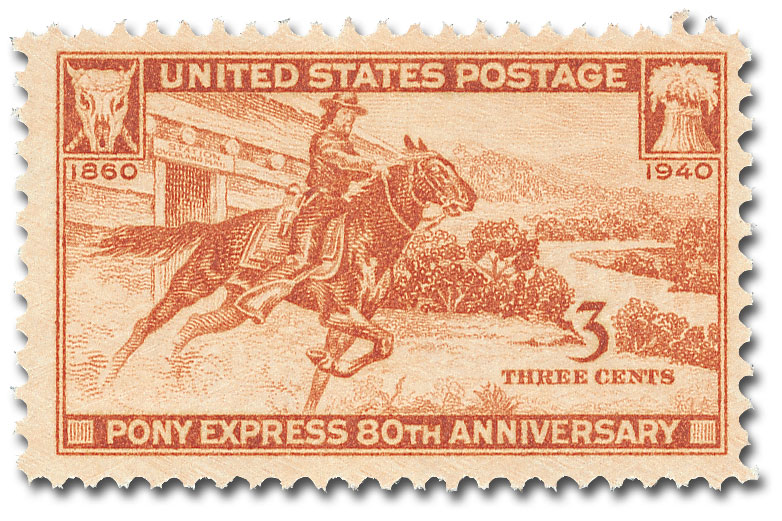
The rides were dangerous, but the pay was good – $25 a week, or the equivalent of over $5,800 in wages today. These were the Pony Express riders. The men, usually younger than 18 years old, were expected to cover 75 miles without rest, despite inclement weather and Native American attacks. Picking up a rested horse at each station, they rode non-stop, day and night, rain or shine.
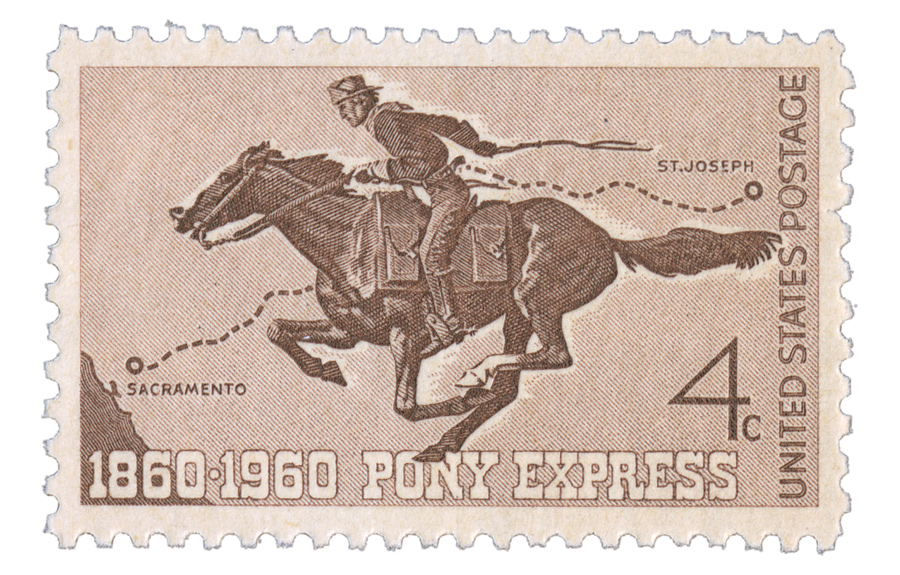
Buffalo Bill Cody, who became famous for his Wild West Show, claimed he rode for the Pony Express when he was just 15 years old. His route was through Wyoming and he told of one time when he rode 322 miles round trip because his relief rider had been killed in a brawl.
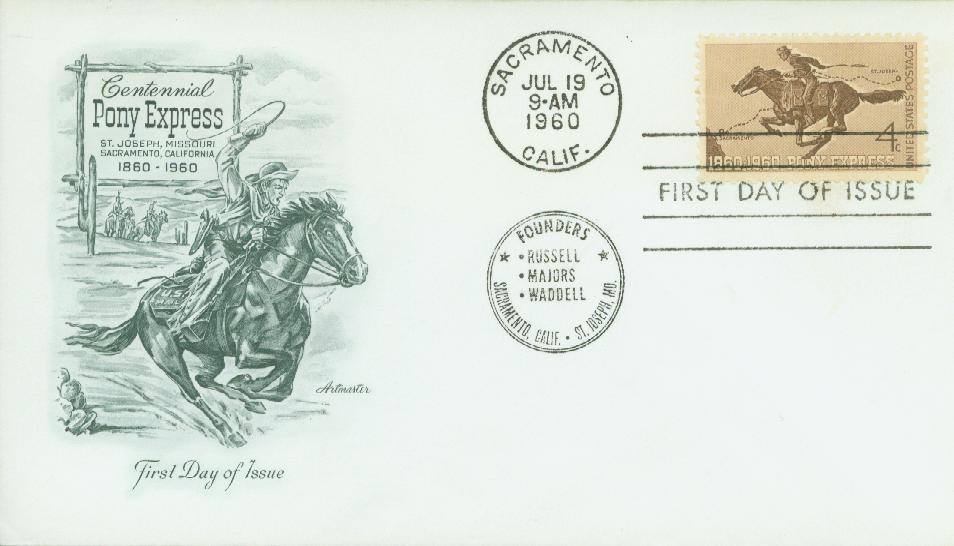
Their route could be completed in eight days, which was 12 to 14 days faster than the Overland Mail. The fastest trip was seven days when riders delivered the news of Abraham Lincoln’s presidential election in November of that year. With extra riders and horses in place, the news traveled from Fort Kearny, Nebraska, where the eastern telegraph line ended, to the start of the western line at Fort Churchill, Nevada Territory. Newspapers in California were able to report on Lincoln’s victory an unprecedented eight days after the election.
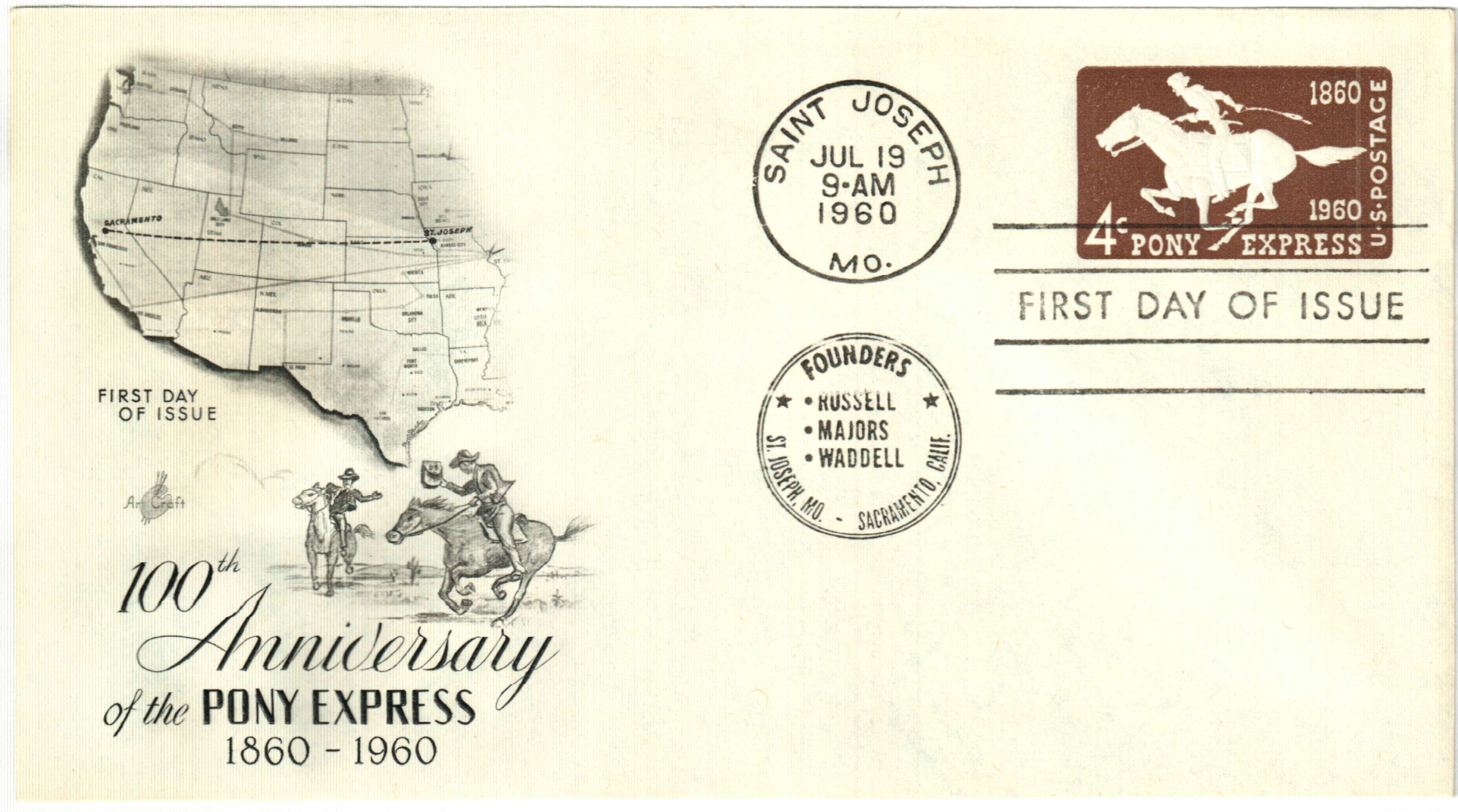
Initially, it cost $5 to send a letter between San Francisco and St. Joseph, Missouri, but that charge was later reduced to $1. An estimated 35,000 letters were carried by the Pony Express.
This adventurous service came to an end just 18 months after that first ride. On October 24, 1861, the Western Union Telegraph Company completed the first transcontinental telegraph line in Salt Lake City. This accomplishment ushered in a new age of communications in the US It also marked the end of the Pony Express two days later, on October 26. In spite of its fame, the Pony Express was a financial failure.

Then in 1862, Wells, Fargo & Company established its own Pony Express, dubbed the “Virginia City Pony.” This service traveled between mining towns in Nevada and the California business centers of Sacramento and San Francisco. While the original Pony Express delivered news, the Virginia City Pony was more concerned with business matters. Improvements in the roads allowed for faster transportation and the Virginia City Pony was discontinued in 1865.
Own a Legendary Pony Express Stamp
Now is your chance to own an authentic Pony Express stamp. This stamp is a piece of history and this is your chance to lock it safely away in your collection.
Before 1860, it could take eight weeks for mail to travel across the country – the Pony Express was created to reduce that time. The first trip began in St. Joseph, Missouri, on April 3, 1860, and arrived in California just 10 days later. In 1861, Wells Fargo took over part of the Transcontinental route west of Salt Lake City. To make accounting easier and to advertise their company, they hired Britton and Company to print stamps for the eastbound mail from California.
The Pony Express stamp only covered the part of delivering the letter the Pony Express did. At the end of the run, the letters would be turned over to the Post Office to be delivered by the postal service, so a postage stamp was also required. The green $2 stamp was used to cover the fee for a 1-ounce letter and was used from July 1861 until November 1861.
The intrepid Pony Express ended 18 months after it began, when telegraph lines reached the West Coast. Few stamps can match the Pony Express issues in beauty and history. Quantities are limited and this remarkable opportunity won’t last forever. Order now.
Inaugural Run of the Pony Express

On April 3, 1860, the Pony Express made its first trip from St. Joseph, Missouri, to Sacramento, California. Though short-lived, the Pony Express was a revolution in communication, able to transport important letters across the country more than twice as fast as the existing overland mail system.

In 1860, William Russell, Alexander Majors, and William B. Waddell sought to create a mail-carrying company that would be faster and more efficient than the stagecoaches of the Butterfield Overland Mail. At that time, it could take months for mail to be delivered to the unsettled West by stagecoach.

They established 184 stations 10-15 miles apart in just two months. The three founders then put a call out for small, brave young men that could ride a horse well. 400 of the fastest horses they could find were purchased and 80 daring riders were hired. The first ride left St. Joseph, Missouri, on April 3, 1860, and arrived in Sacramento, California, just ten days later. In the mochilla, or saddlebag, was a message of congratulations from President Buchanan to the governor of California, which had been telegraphed from Washington to St. Joseph.

The rides were dangerous, but the pay was good – $25 a week, or the equivalent of over $5,800 in wages today. These were the Pony Express riders. The men, usually younger than 18 years old, were expected to cover 75 miles without rest, despite inclement weather and Native American attacks. Picking up a rested horse at each station, they rode non-stop, day and night, rain or shine.

Buffalo Bill Cody, who became famous for his Wild West Show, claimed he rode for the Pony Express when he was just 15 years old. His route was through Wyoming and he told of one time when he rode 322 miles round trip because his relief rider had been killed in a brawl.

Their route could be completed in eight days, which was 12 to 14 days faster than the Overland Mail. The fastest trip was seven days when riders delivered the news of Abraham Lincoln’s presidential election in November of that year. With extra riders and horses in place, the news traveled from Fort Kearny, Nebraska, where the eastern telegraph line ended, to the start of the western line at Fort Churchill, Nevada Territory. Newspapers in California were able to report on Lincoln’s victory an unprecedented eight days after the election.

Initially, it cost $5 to send a letter between San Francisco and St. Joseph, Missouri, but that charge was later reduced to $1. An estimated 35,000 letters were carried by the Pony Express.
This adventurous service came to an end just 18 months after that first ride. On October 24, 1861, the Western Union Telegraph Company completed the first transcontinental telegraph line in Salt Lake City. This accomplishment ushered in a new age of communications in the US It also marked the end of the Pony Express two days later, on October 26. In spite of its fame, the Pony Express was a financial failure.

Then in 1862, Wells, Fargo & Company established its own Pony Express, dubbed the “Virginia City Pony.” This service traveled between mining towns in Nevada and the California business centers of Sacramento and San Francisco. While the original Pony Express delivered news, the Virginia City Pony was more concerned with business matters. Improvements in the roads allowed for faster transportation and the Virginia City Pony was discontinued in 1865.



